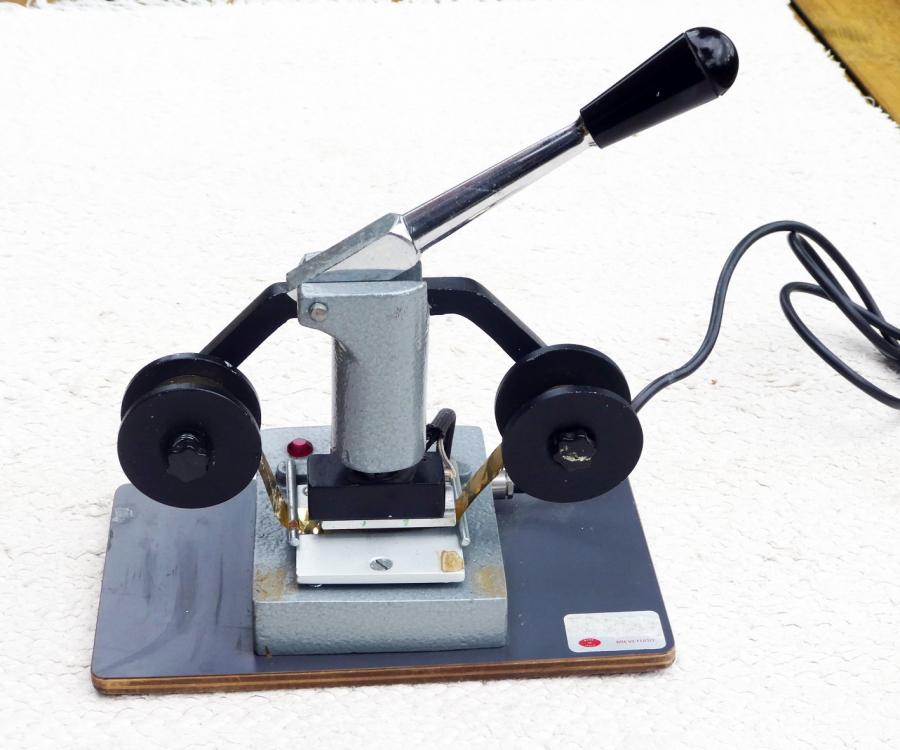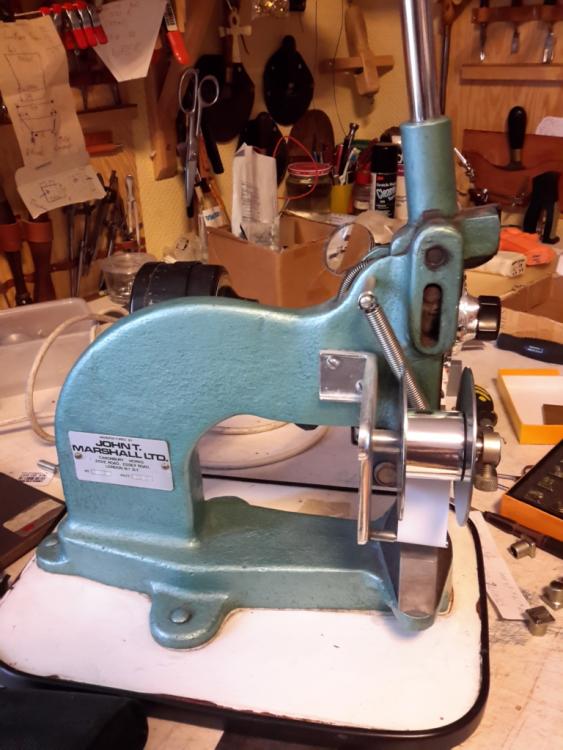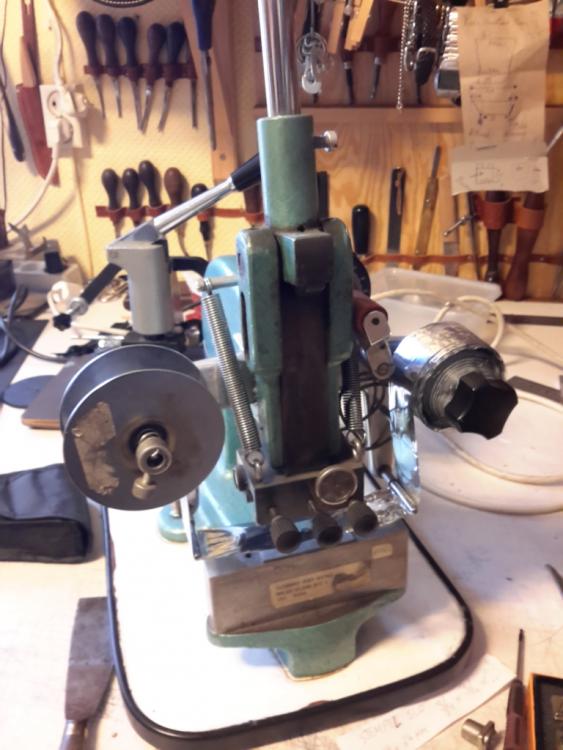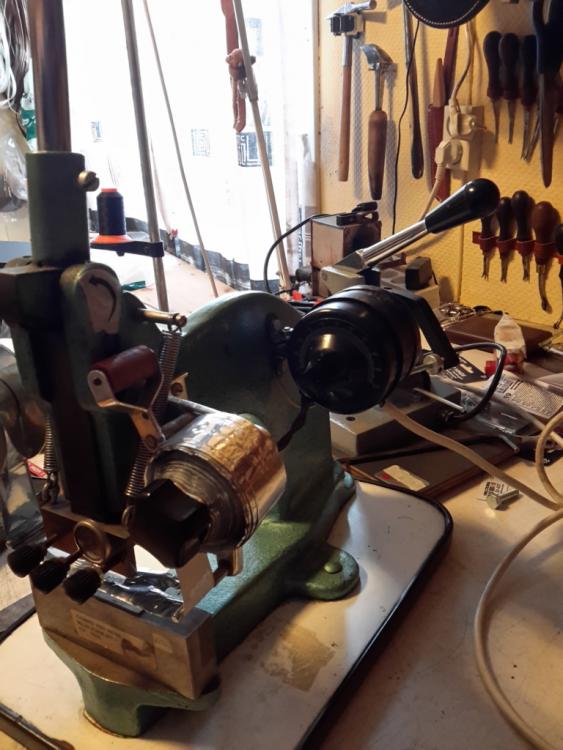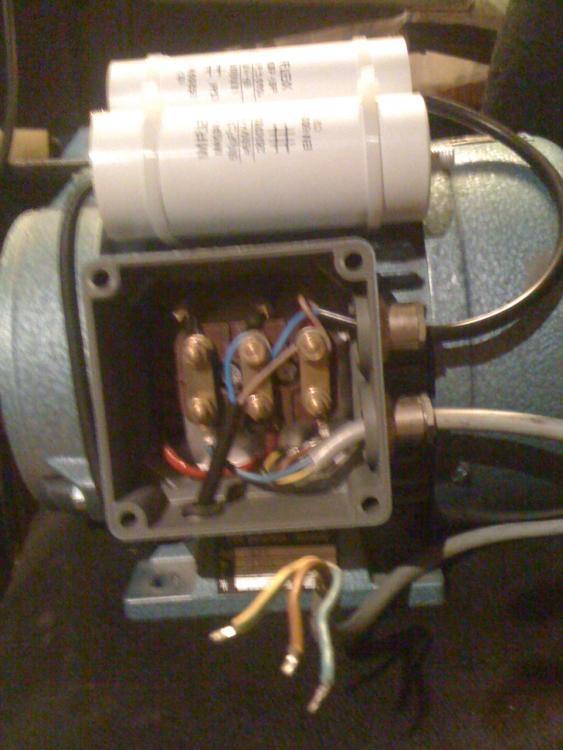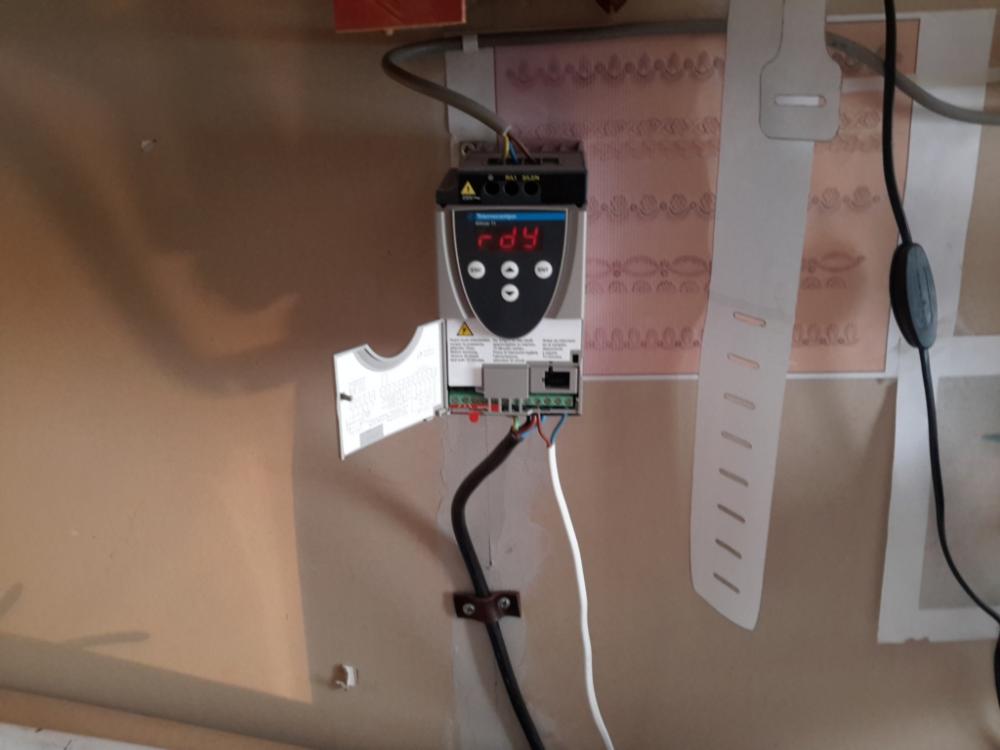-
Posts
1,591 -
Joined
-
Last visited
Content Type
Profiles
Forums
Events
Blogs
Gallery
Everything posted by Trox
-
Hi, is that plough gauge sold yet? Does it have that same tassel mark on the plough as on the knife. Thanks
-
Im currently restoring a UK made John Marshall hotfoil press, changing wires and making a table with guides for leather etc. I' looking for a cheap supplier of heat conducting double sided tape.. for taping brass and magnesium stamps to machine head. Regarding the above post, I don' find it difficult to find suppliers of stamps, but I have trouble producing the required data files they want for the disign. I got some tips about software used to design, but I find this very difficult to do....I have a enough projects...I do not want to spend months learning to use crappy computer programs...tried them on Android ( the platform I use for now) and they are very difficult to use and draw on....Every stamp manufactory just want to cnc or or cast from computer vectors.....No wonder the Stamps are cheap. I would like to draw up on a piece of paper what I want and have a company to smoohing up/editing and make my finished stamp. I have aways used computers since the 1980, but the programs the stamp manufacturers recommnd on android ist a pain in the ......Simplector Pro.. It goes like every other modern program, (the new trend) they want to slim program down but all they do in the process is removing possibilities......make it more difficult use......like crappy mobile websites.....I never though this long lasting hotfoil press project of mine would be stalled by a BL...computer program...
-
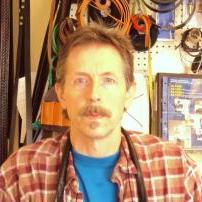
Adler 067 GK-373 tension problem (advanced)
Trox replied to HardenGoods's topic in Leather Sewing Machines
27 £ at college sewing machine https://www.college-sewing.co.uk/store/CPHAD68-BOBBIN-CASE-CAP-ADLER-68-HIROSE Not expensive made by Japanese Hirose...they make good parts -

Adler 067 GK-373 tension problem (advanced)
Trox replied to HardenGoods's topic in Leather Sewing Machines
Hi, Yes s Uwe yours have just groves that makes it harder to get tight tension on thin threads. His is worn right true and would cause problems, I would have changed that bobbin house for a new one...You can get them aftermarket for a good price.. You could try to widen/make the hole round again with a small diamond round file or simmilar..But remember it has to be polished afterwards...Use a white ceramic thin stone.... -

Adler 067 GK-373 tension problem (advanced)
Trox replied to HardenGoods's topic in Leather Sewing Machines
Yes these are important factors, you will get a more consistent top tension threading true several holes. You probably got to ease of on the thread brake, thought. When you the thread knot laying on the top and it suddenly happens in the middle of the seam, those are factors I would have looked out for. Could be caused by uneven bobbin winding or bobbin case opener too, but then perhaps more frequently and probrably with the knot on the bottom. However, everything must be correct...check all thread paths for chips in the metal etc. Good luck! -

Adler 067 GK-373 tension problem (advanced)
Trox replied to HardenGoods's topic in Leather Sewing Machines
When something like this happens it' often because the top thread suddenly get a brake or bottom bobbin is uneven winded. To make the top thread tension stabil you need to make sure of the following factors.... On the thread rack...(use left twisted thread, it usual left twisted) the thread guide on top of the spool must be placed exactly over the center of the thread spool/cone... If it off center you will have uneven top thread tension. Make sure you thread it true at least two holes in the top pin post guide....you can even apply more tension by use several holes....this way you will have a stabil top tension....Bobbins must also be evenly winded... good luck! -
Nice knifes, I have a draw gauge blade from him that performs very well.
- 35 replies
-
- terry knipschield
- knipknives
- (and 8 more)
-
How are you Macca, I now know I this is a Pfaffrath plough and a Otto Langenhan knife. I traded it with a friend in USA that have the rest of the Langenhan plough. Tor
-
The torque of the motor is constant because it has that characteristics and it runs on full speed all the time, but when you put a smaller pulley on it it will be weaker on the output; it will do more work. Changing from a big 120 to a small 48 mm pulley will give you less speed, this is just like riding a bike and change gears. To improve both torque and low speed control, use a speed reducer. If you have a 3 Ph clutch motor, use frequency controller. It will solve the problem, that if your clutch motor have enough power to start with. Minimum 550 - 600 watt and a good clutch (upholstery class). There are many ways to control a good clutch motor, but putting your right hand on the pulley to help slow it down. Taking of your shoes to get a better feel on the pedal etc. But do you have an ancient weak clutch motor to start with, change it out with something new; preferable a servo of good quality.
-

How You Can Help Leatherworker.net
Trox replied to Johanna's topic in Announcements and Administrivia
Sorry to see you are leaving the trade, Send an PM to Johanna about the emails. -
You got to let Sedgwicks look at this leather Arild, and post the result here please. Tor
-
Seems that others have had the same problem with Sedgwick bridle Arild, have you seen this. Tor
-

Vertical type PC bag
Trox replied to ArildS's topic in Purses, Wallets, Belts and Miscellaneous Pocket Items
It seems that others have had the same problem with Sedgwick bridle Arild, have y ou seen this. Tor -
Hi Arild, I don't use these nice Bridles leather so you got to contact the tannery and ask. However, I guess is that it is just the wax coming up to the surface and you can brush/buff it off. Tor
-

Vertical type PC bag
Trox replied to ArildS's topic in Purses, Wallets, Belts and Miscellaneous Pocket Items
Nice work Arild! Good color combination! -

40W Chinese Laser - Engrave and Cut Leather - Discuss
Trox replied to Billy Hell's topic in 3D Printers and Lasers
I used to work for a small Norwegian company that built and sold laser machines. We also did laser shows on advents/ big music advents etc. That time we used mostly tube lasers for big events, they needed a lot of power and water. The modern YAG (diode) lasers was still not powerful enough. These cutting Co2 lasers are puls lasers and that's what's make them that powerful. But I remember we had a 40 watt argon (tube) green laser that burned true a plaster wall on a steady beam. I know these tubes have a limited burning time and if the water supply fail you have big trouble. However, it's funny how cheap they have become. I think you should be careful about moving these around until they are cooled all the way down (if thats neccessary for one reason or another). That time there was only one computer program for lasers avaiable. That was made for Windows and we used windows bitmap pics on graphics, logo projection etc. Good ventilation and steady water supply is neccessary of course, always use safety glasses. I does not matter how many mirrors the beam is reflected true, it still travels to the "moon" and burn your eyes. I remember we had to alert and have permission from air traffic control for outside events. Remeber, it's serious power. I look forwards to hear more about how these inexpensive units works out. Good luck -
Thanks, LumpenDoodle2 I will check it out Adam I know all about having to many projects at once Yes the Americans have it all.
-
Metallic Elephant rebuilds John T Marshall presses just like mine. One of the guys there have worked at the Marshall company for many years. I have been searching for such presses here in Norway for years without finding anything, I was about to build my own of a drill press. Then I stumbled over an add in a Norwegian auction site Finn.no called (translated) photo signing press. I bought that for 25 $, repeated the search the next day and found the Marshall. Typical Norwegian to have their own names on stuff or more likely, both seller where photographers and bought them new in a stores that sells photo equipment. Lesson learned, when you do not find what you looking for, search for alternative names. It might work in Romania too Anyway, building one yourself is not that difficult. I've seen many different types of home built presses that works just fine. I saw one drill press (the ones that you use with a handheld drill) with a die block of aluminum attached where the drill should be. It had a hole on one side with a soldiering iron and a meat thermometer on the other side for controll the temperature. Foil was just placed over the work manually. I bought a couple of small cheap Chinese heating elements on Ebay, each on 200 watt. and they was not expensive. Then it was just the matter of finding a suitable piece of aluminium for the stamping head, drill a hole for the heating element and thread a hole on top for attaching it to the press. The method depends of what kind of press you use of course, Arbor, drillpress or something else. Then making some sort of rack for the foil, side wise like on the Marshall is the easiest way. Such a press would work fine for logo stamping. You could also take it a step further making a stamp head like on my Marshall to acomidiate fonts/type holders. The stamping head can be glued together of brass or aluminium pieces or fixed with screws. No Cnc or welding is necessary to make such head. Is all matter of how much spare time you are willing to invest, calculate that against buying a finished one. The machine type that LumpenDoodle2 uses was once sold on Ebay pretty cheap but are now expensive. They was designed for printing on credit cards but have space enough for straps and small thing. The other cheap Chinese presses they sell on Ebay are just such drill presses. I just could not get myself to pay several hundred $ for one, I started searching for the parts instead for building my own. The only thing that slowed me down, I could not find a decent drillpress online; just crapy ones. I think the Chinese makers have protected them self by not selling these, I know they cannot be expensive since they are using them I'll think they are for sale on the Chinese Ebay, Taobao is it not. Well, my Chinese is not good enough, I heard there should be a app that translate this site and there are a lot of cheap "leather" related cheap stuff there. Example, special needle plates for 441 machines as low as 7 USD. Same stuff (or similar) to the ones sold by US "clone" dealer for 150 to 200 USD. Could be an investment to use some time on that site, I know at least one of our US members that shop there regulary. Here is a YouTube video from Danguman how he made such simple solution out of a rivet press, I don't understand a word that he is saying by the way. His video's speak for them self, check them out; he have lots of great ideas this guy. Tor
-
Hi Adam, I think I've seen these types of printers foil presses you talking about. All I need out of a hotfoil press is small logos and the possibility of putting some letters/names on leather work. What do you think about using a little laser led for aligning up the work. You can use a square or round lens with zoom to display the printing area, or just a small point where the first letter starts etc. Soon you gets these small lasers attached to most power tool you buy, they aren't expensive anymore. When it comes to attaching dies/plates they use a double sided tape nowadays. Tor
-
Hi Bear, I know this is an old topic. But there is an article here you should take a look at http://www.ebay.com/gds/BUYING-A-HOT-STAMP-MACHINE-/10000000000751965/g.html if you still haven't bought any machine. I guess this article is meant for the US public, because there where not much there about European machines. The British made some of the best machines out there and I'm sure there are some nice machines around elsewhere in Europe too. I'm new to hotfoil stamping my self and there is a lot of new terms/tricks of the trade to get familiar with. I just bought two machines, a small Italian press with out regulator and a bigger John T Marshall with regulator and 52 point type holder slot 3/4 x 3/4 x 2,5 inch. The first one worked just fine but have limited space under the stamping head, perfect for logo stamping on reins and watch straps. The Marshall press have space enough but heated very slowly. I found out that the insulation on the cables for the heating element was smelted, cables got to be changed. Not a big deal, but heat resitant cables has to be found. I still do not know if this will help or if I have to change heating element and regulator. However, I paid 25 $ for the Italian press and 120 for the Marshall. So I can afford to use something in refurbishing. I have alredy bought a type holder (kingsley) with a small modification it can use several different brand of types. the small press I will set up with a thin 16G magnesium logo and the Marshall will be used with fonts. that's my plan anyway. I can remove the bottom plate on the first Italian press to get more space. And I'm planning to remove the bottom block on the Marshall and replace it with a aluminum plate/bed with rulers. On the Marshall you can tilt the type holder head forwards to easier change types/stamps, very cleverly disigned. let me know what you have bought or what your plans are. Good luck with it. Tor
-
Of course, that is what you do. Just for illustration I wrote it like that. I've been using these controller for many years and not had any problem with them.
-
Before I can recommend you using one of these methods I got to see the setup, motors and the connection box on the actual machine. If there are two three Ph motors on it, one clutch motor and a regular AC motor (one speed). Then both these methods will work fine. But if one of the motors are a DC servo motor or the machine has an electronic inbuilt speed control, then it's a difficult task. It still might be possible, but a much more difficult project.
-
Depended of how much amp and watt the motor is on, you got to buy a little bit over size. You can get them used on Ebay. I would guess it's possible to get one new (the right size) for the machine between 50 to 70 USD. However, it's easy to rewire a three Ph AC motor to single too. All you need a capacitor to mirror one of the Phases, See pic. The bigger the capacitor is, the less torque you loose. Because, the AC motor is always stronger when it runs on three ph, than on single. Here I've have used two big capacitors instead of one. But they are connected the same way as with one. It's an 1 KW AC motor for a air compressor. The frequency controller is the best option when you need the possibility to adjust the speed of the motor. I used them on everything from sewing machine clutch motors to the skiving unit. I always have some laying around. Gigi uses one on their skiving machine too. I always use the easiest method when I need to connect a three Ph motor to a single Ph net. On the skiving unit I would have to rewire two motors with capasitors. Therfore I just plugged it in to a frequency controller, much easier. You also have to connect a little switch, for the startup of the machine. I only used a little lamp switch ( I used a foot button lamp switch with two wires/poles). Of course you have to read the Pdf instructions/manual for the controller. The Watt and amp rating on the motor desides how big it has to be. This is one on 0,75 KW. The single current from wall outlet comes in on the top, the white cable goes to the start switch (lamp switch). And the four other goes to the motor conections(or machine input box). To connect the four (output) wires for the motor: Earth on earth of course, then you just going to try with the three others. There are three contacts on the motor where they should be conected. If it doesn't start, change them around and if it starts and goes the wrong direction; change them around again until it starts and goes the right direction. There is no other way to connect these, try and fail (it's not dangerous). With this type of controller you can control every parameter on a AC motor if needed, like tourque, speed, startup time/stoping time you name it. But in this case you do not have to do anything else than set the hertz to full (full speed) This is easy to do if you know the principals, if not get some help from an electrician. Tor
-
Mine has three motors, one 380V for the knife that runs on full speed. One for the suction device, also 380 V on full speed. And a little 12v DC motor inside the head for the feed wheel. I do not have three phase (380V) in my workshop, so I just connected a frequency controller. It's plugged in my 220V single Ph outlet and four leads goes from it to the 380V inlet on the machine. The controller converts single 220v in to three phase 380V. And the hertz controller on it gives the full 50 hertz all the time, motors run at full speed as they must on this set up. That's how easy it is to do this, ask Gigi for help. By the way all AC motors are initially a three phase motor. Tor
-
Disregard my question, found them here in Oslo. Thanks anyway



